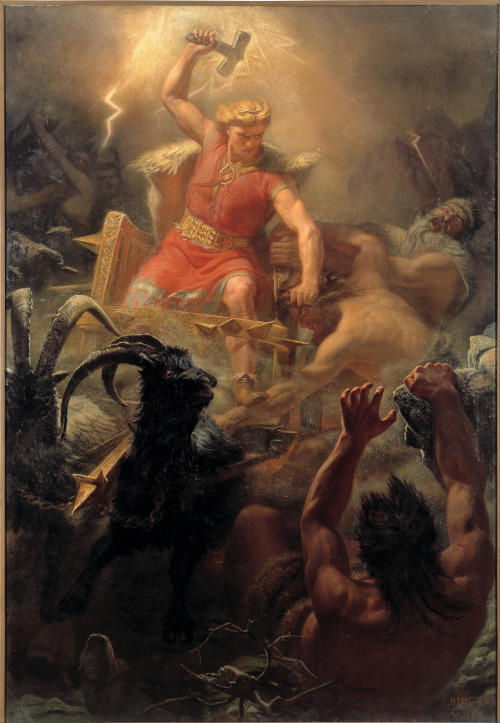St. Olav - An Echo Of Thor?A red bearded warrior, hunting trolls with his axe on his travels does no
St. Olav - An Echo Of Thor?A red bearded warrior, hunting trolls with his axe on his travels does not require us to make a huge leap of imagination in order to note similarities with the norse god Thor. However, there is far more to the comparison that St. Olav may have been used to reimagine pre-Christian beliefs surrounding Thor if we look a little deeper…Following Christianisation in Northern Europe, many Scandinavians kept their heathen beliefs alive through syncretism with Christianity. A strong case can be made for this practice being evident with the Catholic saint and former king of Norway, Olav Haraldsson, celebrated each year on 29th July.In Scandinavia, from long ago through until more recent times, St. Olav’s day was the day when the people would pray for thunder (named directly from Thor) and (as they referred to it) “the rain of the Æser” to prepare the crop for harvest, which they so eagerly awaited to come to fruition at this time of year.St. Olav, like Thor, could control trolls and giants, according to legend. When he travelled around Norway on his Christening mission, the trolls often tried to block the way for him. He then used his power to turn them to stone, as if he was the sun, using a cross instead of Thor’s hammer, mjølnerOne story, from the area of Ringerike, tells us that when St. Olav tried to pass a place called Krokkleiva, an angry giantess jumped out of the mountainside and said: “Saint Olaf with the red beard, you are riding too close to my cellar wall!” But St. Olaf replied: “Stand you there in wood and stone until I return!” Whereupon the giantess was turned into stone. Similar stories are told about various landscape features throughout Norway. People also saw other traces of St. Olaf in the landscape, such as footprints of his horse. A stone in Setesdal is said to be his chair, two rocks near Stiklestad are his bowl and cup, etc…Another famous landmark is The Well Of St. Olav at Karmøy:“The legend claims that King Olaf was followed by enemies through the strait Karmsund. He sailed his ship to the western side of the island. From here the King and his men started to drag the ship over land from Torvastad to Vikingstad.The hard work made them thirsty and the King stabbed his clenched fist in the rock. Immediately it came roaring up clear water so everyone could drink.”Most interesting about St. Olav’s Well is that it is located in Torvastad and just a few hundred meters to the west we find Hovland. As the name suggests, it was likely to have been a pagan hov (temple). We know that water played a major role in Norse mythology, and perhaps the water in St. Olav’s well also had a sacred function in Pre-Christian times.In Viking times, before the conversion to Christianity (and after it, too), people in Norway believed in different supernatural beings living in the landscape. Landscape features could also be made by them, such as mountains being petrified trolls, or a ravine being the axe blow of a giant. With these stories about St. Olav, this way of thinking and explaining the landscape takes on a Christian mask, yet it is still fundamentally a continuation of traditional beliefs. -- source link
#forn sed#forn sidr#nordisk sed#folketro#folklore#folk tales#scandinavian folklore#syncretism#st olav#olav haraldsson#asatru#ásatrú#åsatro#norse gods#norse heathenry

